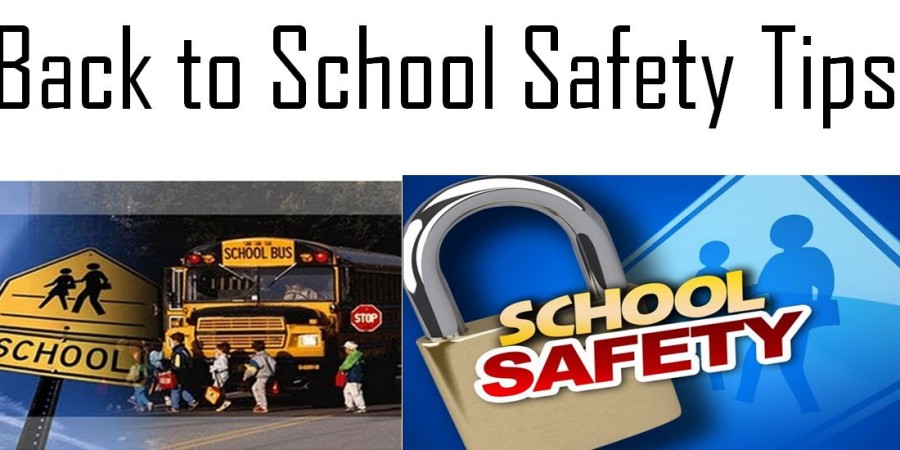Top 5 Back to School Safety Lessons
It’s still hot as the hinges of H-E-double hockey sticks outside, but summer vacation is officially winding down. It’s that time again – Back to School! This annual transition is a perfect opportunity to check in with your child about their personal safety skills. Here are our top 5 Back to School Safety Lessons:
1) Be Wary of Strangers Who Approach Children
Most kids have heard the phrase “don’t talk to strangers” from their parents and teachers over and over throughout their childhood. However, chances are that their experiences with adults thus far in their lives have reinforced the notion that most adults are kind, safe, and helpful. After all, a stranger is just a person you haven’t met yet!
A person’s status as a “stranger” is not in itself suspicious. Rather, it’s the fact that they are an adult approaching a child that they do not already know instead of approaching the parent or caregiver who is responsible for that child. Ask yourself – Does your child understand that distinction? What would your child do if they were approached by a stranger asking if they wanted some ice cream out of their van?
Check out this social experiment that tests what kids actually do when approached by a stranger. The results may shock you.
Children are naturally trusting, so simply reminding them not to talk to strangers is not going to stick in a meaningful way. Children need to practice correct responses through role playing and scenario-based training in addition to having meaningful conversations about how to keep themselves safe.
2) Adult Strangers Don’t Need Help From Children
Despite being warned about “stranger danger,” children have also usually been taught that they should be polite and helpful to adults. Additionally, they will often repeat the behavior that they see their parents modeling. For instance, if your child sees you helping a young tourist by giving them directions, your child will be getting the message that helping people in need, even strangers, is appropriate behavior. Thus, it is important to discuss with your child that there is a critical difference between an adult stranger asking help from another adult and an adult stranger asking for help from a child.
Ask your child why the adult stranger would be asking them for help when they could get help from another adult instead, and then discuss what an appropriate response would be.
3) The 5 W’s of Responsible Reporting
If your child is attacked or bullied at school, would they know what to do afterwards? Have a conversation with your child about WHAT sort of incidents need to be reported, to WHOM they should report these incidents, WHERE they can run to for help in case of an incident, WHEN to report, and WHY reporting helps everyone involved.
Furthermore, talk with and listen to your child every day. Ask questions about their school day, including experiences on the way to and from school, at lunch, during recess, or in between classes. Ask about their peers, not only their friends. Children who feel comfortable talking to their parents about these matters before they are involved in bullying are more likely to report to their parents after an incident occurs.
4) Yell Loud & Yell Often
We all expect that if someone is attacked, they will scream or yell for help. Quite the contrary! Research on how adrenaline affects our system proves that we do the opposite!
If we do not practice yelling things like, “Help!” “No!” “Stop!” “Get away from me!” or, “I don’t know you!” we won’t do so in an adrenalized situation such as an attack. We have an instinctual fight, flight, or freeze response, but none of those involve yelling, “leave me alone!” at the top of our lungs. A child yelling something like, “You’re not my mom!” while an assailant is trying to pull them into their car will attract the attention of surrounding adults who can come to their aid. Practice is the only way to build this response.
You can practice by shouting phrases like “stop!” or “leave me alone!” at the top of your lungs together, or practice by shouting into a pillow if you don’t want to attract attention.

5) Self Defense Against Bullies
Most schools have a student policy that includes a clause about physical violence being against the rules, and most of the policies outline the consequences of being involved in a physical altercation. Even if your child was physically attacked, they will likely still be punished by the school district for physically defending themselves. Therefore, children need to know how to defend themselves in a manner so that the child-attacker does not get hurt, and they must learn how to find help from an adult who can advocate for their right to defend themselves.
While any martial art can teach a child how to hit and kick effectively, Krav Junior will teach your child the difference between a “hard solution” and a “soft solution” and when it is appropriate to use either one. We teach your child how to adjust their use of force so that they inflict minimal harm to another child and maximum harm to an adult attacker. We also empower your child to make their own decisions about how much force is appropriate, and we prepare them for having to face the consequences of those decisions. And we practice how to report the details of the incident to a safe adult after the fact, and even what to do if they don’t feel heard by that particular adult.
In the Krav Junior program at Lions Krav Maga, we teach these lessons, among many others, to kids ages 3 and up. We have 3 divisions in Krav Junior:
- Kids Division for children age 3-5
- Youth Division for children age 6-8
- Junior Division for children age 9-12
At Lions, we believe that personal safety instruction is one of the most important and priceless gifts anyone could give to a child growing up in the modern world. Never forget — your child’s first & most important teacher will always be you! So, talk to your children early & often about how to keep themselves safe, and keep the conversation going throughout the school year & throughout their lives.

Comments are closed.